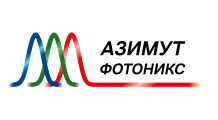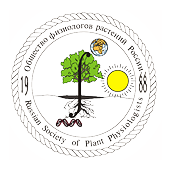04 ноября, 2020

CAM modes provide environment-specific water-saving benefits in a leaf metabolic model
To answer the question whether full CAM or alternative water-saving modes would be more productive in the environments typically experienced by C3 crops, the researchers coupled a day-night model of leaf metabolism and a gas-exchange model and performed simulations for a wide range of environments.
https://www.eurekalert.org/
Effects of Nutrient and Water Supply During Fruit Development on Metabolite Composition in Tomato Fruits (Solanum lycopersicum L.) Grown in Magnesium Excess Soils
Tomato cultivation in the greenhouse or field may experience high surplus salts, including magnesium (Mg2+), which may result in differences in the growth and metabolite composition of fruits. This study hypothesized that decreasing the supply of nutrients and/or water would enhance tomato fruit quality in soils with excess Mg2+ that are frequently encountered in the field and aimed to find better supply.
https://www.frontiersin.org/
Phytoplasma effector proteins devastate host plants through molecular mimicry
Phytoplasma are a type of bacteria that live within the cells and cause devastating diseases with damaging effects. For example, in many cases plants infected with phytoplasma are no longer able to develop flowers.
https://www.eurekalert.org/
Plant genomes: Markers of evolutionary history and drivers of evolutionary change
Soltis and Soltis describe how plant genomes have been harnessed for studies of plant phylogeny and diversification, with examples spanning all green plants, a clade of nearly half a million species spanning nearly a billion years of evolutionary time. Then focusing on angiosperms, they suggest how the process of whole‐genome duplication (polyploidy) has driven, and continues to drive, major innovations in morphology, stress response, and more. Together, these perspectives will begin to reveal how genomic change can lead to novelty and diversity at the organismal level.
https://nph.onlinelibrary.
A molecular break for root growth
Length of plant roots is controlled by hormones.
https://www.eurekalert.org/
Aroid aerial roots answer new pressures with new morphology
Specialization for water retention came from a layer of cork on the roots’ exterior.
https://www.botany.one/2020/
Insights Into the Regulation of the Expression Pattern of Calvin-Benson-Bassham Cycle Enzymes in C3 and C4 Grasses
C4 photosynthesis is characterized by the compartmentalization of the processes of atmospheric uptake of CO2 and its conversion into carbohydrate between mesophyll and bundle-sheath cells. As a result, most of the enzymes participating in the Calvin-Benson-Bassham (CBB) cycle, including RubisCO, are highly expressed in bundle-sheath cells. There is evidence that changes in the regulatory sequences of RubisCO contribute to its bundle-sheath-specific expression, however, little is known about how the spatial-expression pattern of other CBB cycle enzymes is regulated. Afamefule and Raines use a computational approach to scan for transcription factor binding sites in the regulatory regions of the genes encoding CBB cycle enzymes, SBPase, FBPase, PRK, and GAPDH-B, of C3 and C4 grasses. They identified potential cis-regulatory elements present in each of the genes studied here, regardless of the photosynthetic path used by the plant. The trans-acting factors that bind these elements have been validated in A. thaliana and might regulate the expression of the genes encoding CBB cycle enzymes.
https://www.frontiersin.org/
Genetic mapping of the early responses to salt stress in Arabidopsis thaliana
Awila et al. examined the salt stress-induced responses of 191 Arabidopsis accessions from one hour to seven days after treatment using high-throughput phenotyping. Multivariate analyses and machine learning algorithms identified that quantum yield measured in the light-adapted state (Fv'/Fm') greatly affected growth maintenance in the early phase of salt stress, while maximum quantum yield (QY max) was crucial at a later stage. In addition, their genome-wide association study (GWAS) identified 770 loci that were specific to salt stress, in which two loci associated with QY max and Fv'/Fm' were selected for validation using T-DNA insertion lines.
https://www.biorxiv.org/
Protective shield: Membrane-attached protein protects bacteria and chloroplasts from stress
Stress is present everywhere, even bacteria and plant cells have to cope with it. They express various specific stress proteins, but how exactly this line of defense works is often not clear. A group of scientists has now discovered a protective mechanism in cyanobacteria as well as in chloroplasts of plant cells.
https://www.sciencedaily.com/
Plant-plant communication: Is there a role for volatile damage-associated molecular patterns?
Damage-associated molecular patterns (DAMPs) are an ancient form of tissue-derived danger or alarm signals that initiate cellular signaling cascades, which often initiate defined defense responses. A DAMP can be any molecule that is usually not exposed to cells such as cell wall components, peptides, nucleic acid fragments, eATP and other compounds. DAMPs might be revealed upon tissue damage or
during attack. Typically, DAMPs are derived from the injured organism.
https://pure.mpg.de/rest/
Computational identification of maize miRNA and their gene targets involved in biotic and abiotic stresses
Plant interactions with biotic and abiotic stresses are complex and entail changes at the transcriptional, cellular and physiological level. MicroRNAs (miRNAs) are small, non-coding RNAs that play a vital role in wide range of biological processes involved in regulation of gene expression through translation inhibition or degradation of their target mRNAs during stress conditions.
https://www.ias.ac.in/article/
Molecular pathways regulating elongation of aerial plant organs: a focus on light, the circadian clock, and temperature
In this review we summarize the key signaling pathways that regulate the growth of hypocotyls and petioles, focusing specifically on molecular mechanisms important for transducing signals derived from light, the circadian clock, and temperature. While it is clear that similarities abound between the signaling networks at play in these two organs, there are also important differences between the mechanisms regulating growth in hypocotyls and petioles
https://onlinelibrary.wiley.
Создан прототип клетки, способный синтезировать компоненты собственной мембраны
Ученые из Нидерландов создали прототип клетки, синтезирующий липиды, из которых состоит его мембрана.
https://elementy.ru/novosti_
Evolutionary dynamics of genome size in a radiation of woody plants
Moeglein et al. discovered nine independent polyploidization events, two reductions in base chromosome number, and substantial variation in genome size with a slight trend toward genome size reduction in polyploids. They did not find strong relationships between genome size and the functional and morphological traits that have been highlighted at broader phylogenetic scales.
https://bsapubs.onlinelibrary.
Within a mixed species, annuals self-pollinate more than perennials
A smaller stigma-anther separation in annuals seems to indicate a genetic basis for mating system differences.
https://www.botany.one/2020/
WUSCHEL triggers innate antiviral immunity in plant stem cells
The meristem, the collection of stem cells that builds plants, is resistant to viral infection. Wu et al. now show that WUSCHEL, a transcription factor that helps to sustain stem cell production in the shoot apical meristem of Arabidopsis, also protects that stem cell domain from viruses. WUSCHEL inhibited viral protein synthesis by repressing methyltransferases that regulate ribosomal RNA processing and ribosome stability.
https://science.sciencemag.
A comprehensive fluorescent sensor for spatiotemporal cell cycle analysis in Arabidopsis
Desvoyes et al. have generated a versatile fluorescent sensor, PlaCCI (plant cell cycle indicator) on the basis of the expression of CDT1a-CFP, H3.1-mCherry and CYCB1;1-YFP, that identifies cell cycle phases in Arabidopsis thaliana. This tool works in a variety of organs, and all markers and the antibiotic resistance are expressed from a single cassette, facilitating the selection in mutant backgrounds.
https://www.nature.com/
How some sea slugs keep their ability to carry out plant-like photosynthesis
Study provides strong evidence of mechanisms in sea slugs that allow them to host and protect chloroplasts ingested from their food, thereby maintaining their ability to photosynthesize.
https://elifesciences.org/
Molecular compass for cell orientation
Scientists discovered how the hormone auxin coordinates the cells during vasculature formation and regeneration.
https://www.sciencedaily.com/
Новости науки и практики // Ноябрь 2020

Ethylene signaling mediates host invasion by parasitic plants
Parasitic plants form a specialized organ, a haustorium, to invade host tissues and acquire water and nutrients. To understand the molecular mechanism of haustorium development, Cui et al. performed a forward genetics screening to isolate mutants exhibiting haustorial defects in the model parasitic plant Phtheirospermum japonicum. They isolated two mutants that show prolonged and sometimes aberrant meristematic activity in the haustorium apex, resulting in severe defects on host invasion.
https://advances.sciencemag.
Parasitic plants form a specialized organ, a haustorium, to invade host tissues and acquire water and nutrients. To understand the molecular mechanism of haustorium development, Cui et al. performed a forward genetics screening to isolate mutants exhibiting haustorial defects in the model parasitic plant Phtheirospermum japonicum. They isolated two mutants that show prolonged and sometimes aberrant meristematic activity in the haustorium apex, resulting in severe defects on host invasion.
https://advances.sciencemag.
CAM modes provide environment-specific water-saving benefits in a leaf metabolic model
To answer the question whether full CAM or alternative water-saving modes would be more productive in the environments typically experienced by C3 crops, the researchers coupled a day-night model of leaf metabolism and a gas-exchange model and performed simulations for a wide range of environments.
https://www.eurekalert.org/
Effects of Nutrient and Water Supply During Fruit Development on Metabolite Composition in Tomato Fruits (Solanum lycopersicum L.) Grown in Magnesium Excess Soils
Tomato cultivation in the greenhouse or field may experience high surplus salts, including magnesium (Mg2+), which may result in differences in the growth and metabolite composition of fruits. This study hypothesized that decreasing the supply of nutrients and/or water would enhance tomato fruit quality in soils with excess Mg2+ that are frequently encountered in the field and aimed to find better supply.
https://www.frontiersin.org/
Phytoplasma effector proteins devastate host plants through molecular mimicry
Phytoplasma are a type of bacteria that live within the cells and cause devastating diseases with damaging effects. For example, in many cases plants infected with phytoplasma are no longer able to develop flowers.
https://www.eurekalert.org/
Plant genomes: Markers of evolutionary history and drivers of evolutionary change
Soltis and Soltis describe how plant genomes have been harnessed for studies of plant phylogeny and diversification, with examples spanning all green plants, a clade of nearly half a million species spanning nearly a billion years of evolutionary time. Then focusing on angiosperms, they suggest how the process of whole‐genome duplication (polyploidy) has driven, and continues to drive, major innovations in morphology, stress response, and more. Together, these perspectives will begin to reveal how genomic change can lead to novelty and diversity at the organismal level.
https://nph.onlinelibrary.
A molecular break for root growth
Length of plant roots is controlled by hormones.
https://www.eurekalert.org/
Aroid aerial roots answer new pressures with new morphology
Specialization for water retention came from a layer of cork on the roots’ exterior.
https://www.botany.one/2020/
Insights Into the Regulation of the Expression Pattern of Calvin-Benson-Bassham Cycle Enzymes in C3 and C4 Grasses
C4 photosynthesis is characterized by the compartmentalization of the processes of atmospheric uptake of CO2 and its conversion into carbohydrate between mesophyll and bundle-sheath cells. As a result, most of the enzymes participating in the Calvin-Benson-Bassham (CBB) cycle, including RubisCO, are highly expressed in bundle-sheath cells. There is evidence that changes in the regulatory sequences of RubisCO contribute to its bundle-sheath-specific expression, however, little is known about how the spatial-expression pattern of other CBB cycle enzymes is regulated. Afamefule and Raines use a computational approach to scan for transcription factor binding sites in the regulatory regions of the genes encoding CBB cycle enzymes, SBPase, FBPase, PRK, and GAPDH-B, of C3 and C4 grasses. They identified potential cis-regulatory elements present in each of the genes studied here, regardless of the photosynthetic path used by the plant. The trans-acting factors that bind these elements have been validated in A. thaliana and might regulate the expression of the genes encoding CBB cycle enzymes.
https://www.frontiersin.org/
Genetic mapping of the early responses to salt stress in Arabidopsis thaliana
Awila et al. examined the salt stress-induced responses of 191 Arabidopsis accessions from one hour to seven days after treatment using high-throughput phenotyping. Multivariate analyses and machine learning algorithms identified that quantum yield measured in the light-adapted state (Fv'/Fm') greatly affected growth maintenance in the early phase of salt stress, while maximum quantum yield (QY max) was crucial at a later stage. In addition, their genome-wide association study (GWAS) identified 770 loci that were specific to salt stress, in which two loci associated with QY max and Fv'/Fm' were selected for validation using T-DNA insertion lines.
https://www.biorxiv.org/
Protective shield: Membrane-attached protein protects bacteria and chloroplasts from stress
Stress is present everywhere, even bacteria and plant cells have to cope with it. They express various specific stress proteins, but how exactly this line of defense works is often not clear. A group of scientists has now discovered a protective mechanism in cyanobacteria as well as in chloroplasts of plant cells.
https://www.sciencedaily.com/
Plant-plant communication: Is there a role for volatile damage-associated molecular patterns?
Damage-associated molecular patterns (DAMPs) are an ancient form of tissue-derived danger or alarm signals that initiate cellular signaling cascades, which often initiate defined defense responses. A DAMP can be any molecule that is usually not exposed to cells such as cell wall components, peptides, nucleic acid fragments, eATP and other compounds. DAMPs might be revealed upon tissue damage or
during attack. Typically, DAMPs are derived from the injured organism.
https://pure.mpg.de/rest/
Computational identification of maize miRNA and their gene targets involved in biotic and abiotic stresses
Plant interactions with biotic and abiotic stresses are complex and entail changes at the transcriptional, cellular and physiological level. MicroRNAs (miRNAs) are small, non-coding RNAs that play a vital role in wide range of biological processes involved in regulation of gene expression through translation inhibition or degradation of their target mRNAs during stress conditions.
https://www.ias.ac.in/article/
Molecular pathways regulating elongation of aerial plant organs: a focus on light, the circadian clock, and temperature
In this review we summarize the key signaling pathways that regulate the growth of hypocotyls and petioles, focusing specifically on molecular mechanisms important for transducing signals derived from light, the circadian clock, and temperature. While it is clear that similarities abound between the signaling networks at play in these two organs, there are also important differences between the mechanisms regulating growth in hypocotyls and petioles
https://onlinelibrary.wiley.
Создан прототип клетки, способный синтезировать компоненты собственной мембраны
Ученые из Нидерландов создали прототип клетки, синтезирующий липиды, из которых состоит его мембрана.
https://elementy.ru/novosti_
Evolutionary dynamics of genome size in a radiation of woody plants
Moeglein et al. discovered nine independent polyploidization events, two reductions in base chromosome number, and substantial variation in genome size with a slight trend toward genome size reduction in polyploids. They did not find strong relationships between genome size and the functional and morphological traits that have been highlighted at broader phylogenetic scales.
https://bsapubs.onlinelibrary.
Within a mixed species, annuals self-pollinate more than perennials
A smaller stigma-anther separation in annuals seems to indicate a genetic basis for mating system differences.
https://www.botany.one/2020/
WUSCHEL triggers innate antiviral immunity in plant stem cells
The meristem, the collection of stem cells that builds plants, is resistant to viral infection. Wu et al. now show that WUSCHEL, a transcription factor that helps to sustain stem cell production in the shoot apical meristem of Arabidopsis, also protects that stem cell domain from viruses. WUSCHEL inhibited viral protein synthesis by repressing methyltransferases that regulate ribosomal RNA processing and ribosome stability.
https://science.sciencemag.
A comprehensive fluorescent sensor for spatiotemporal cell cycle analysis in Arabidopsis
Desvoyes et al. have generated a versatile fluorescent sensor, PlaCCI (plant cell cycle indicator) on the basis of the expression of CDT1a-CFP, H3.1-mCherry and CYCB1;1-YFP, that identifies cell cycle phases in Arabidopsis thaliana. This tool works in a variety of organs, and all markers and the antibiotic resistance are expressed from a single cassette, facilitating the selection in mutant backgrounds.
https://www.nature.com/
How some sea slugs keep their ability to carry out plant-like photosynthesis
Study provides strong evidence of mechanisms in sea slugs that allow them to host and protect chloroplasts ingested from their food, thereby maintaining their ability to photosynthesize.
https://elifesciences.org/
Molecular compass for cell orientation
Scientists discovered how the hormone auxin coordinates the cells during vasculature formation and regeneration.
https://www.sciencedaily.com/
Новости
Новости науки и практики // Октябрь 2024
Обзор научных новостей, опубликованных во всемирной паутине за последний месяцСобрание (ассамблея) научных обществ
МГУ, 11-13 октября 2024 г.Всероссийская научная конференция с международным участием «Экспериментальная биология растений и климатические вызовы»
Екатеринбург, с 3 по 8 октября 2024 г.Подписка на новости ОФР



Объявления
Записей не найдено.



